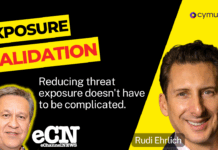NEW ORLEANS – After a long, five-year journey for Nutanix to make hyper-converge a reality in Canada, the Canadian Country Manager believes the market has accepted the software-defined infrastructure solution.
Robert Yelenich, during the Nutanix .Next Conference, said in the last eight to 12 months CIOs in Canada are seeing the business outcomes from hyper converged solutions.

“IT leaders have to enable the business today to make it more competitive, but they struggle to manage the public, private clouds and our messaging is around harmonizing the public and private clouds together,” he said.
The acceptance of hyper converged started with VDI or robo workloads, but now Yelenich said customers are adopting a lot more including large enterprise type workloads such as Oracle, SQL, SAP, and Splunk.
“We are also seeing customers going with AHV (Nutanix’ hypervisor) where as in the past, that was a soft-type of sale.”
Some of the factors for hyper converge’s acceptance comes from the recent enhancements from Nutanix and micro segmentation and financial analysis.
Yelenich took over the Canadian operation of Nutanix approximately two years ago from Anton Granic. And, while the Flow, Era, and Beam announcements are significant to the hyper-converged pioneer, Yelenich told EChannelNews they are part of a much bigger rollout for the Canadian market coming this year.
“We are moving into an interesting space and this is the first phase,” he said. Yelenich did not tip his hand as to future Nutanix announcements for Canada, but he did say the company has worked to make infrastructure invisible. Then virtualization invisible and the next step is to make cloud invisible.
The challenge in the Canadian market, as he sees it, is the conservative nature of customers. Currently, Yelenich forecasts that Canadian customers are at least eight months to 12 months away. However, the good news is that they have acknowledged the hybrid cloud approach and the adoption plans are in place.
Also, the Nutanix brand has grown in Canada. Yelenich added it’s hard to find Canadian customers who does not know of the San Jose, Calif.-based vendor. What’s new is that Canadian customers are developing investment plans for Nutanix solutions such as Flow, Era and Beam with channel partners.
“We in turn are doubling down on our own channel development and we want to be a strategic resource to enable the channel to get certifications and increase their level of self-sufficiency and service,” he said.
Nutanix Canada has increased the number of pre-sales people to help channel partners onboard new customers across all verticals especially the large enterprise space.
One of the major changes Yelenich made for Nutanix Canada is reducing the number of solution provider partners. One of the reasons for this is that Nutanix Canada did not have the necessary people resources to spend with all these partners. Those that made the cut at Nutanix Canada got a strategic partner locator. According to Yelenich, this made it easier to invest in partners.
The market opportunity for the channel is in the large installed base of legacy systems. “The problem is these people are struggling with that and can’t shut the tap and they are looking for a software landing. But what they are finding is the partners are more sophisticated in the approach and have more choice,” he said.















